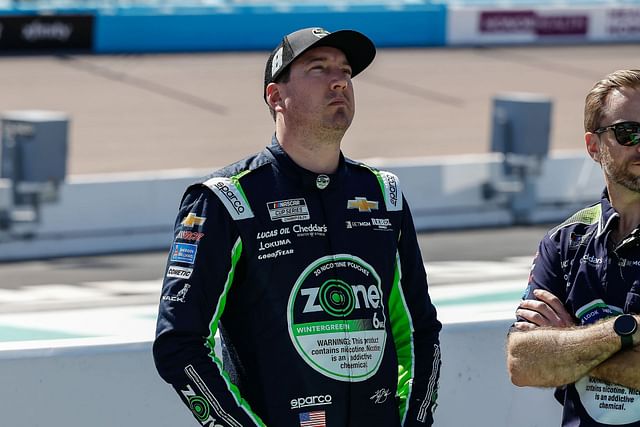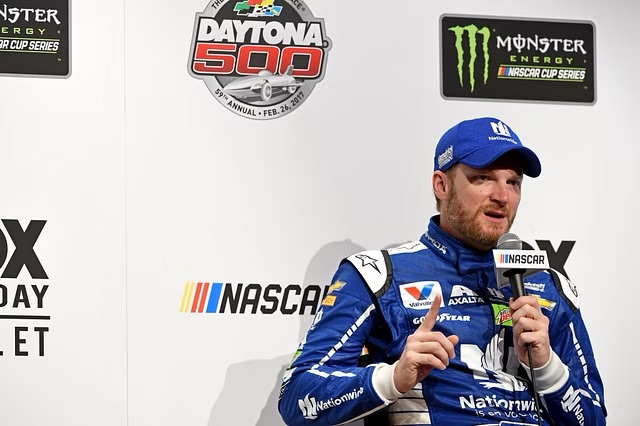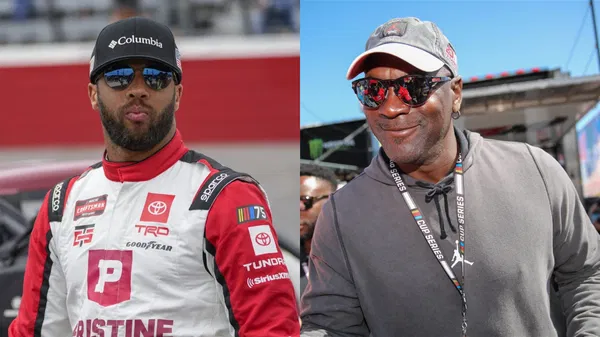Tempers flared within the No. 12 team during last Sunday’s race at Watkins Glen when NASCAR decided to stall driver Ryan Blaney. Following his ejection from the 90-lap event, Blaney shared his frustrations in a post-race interview with NBC. However, in a subsequent interview with SiriusXM NASCAR Radio on Wednesday, he revealed that he was unaware of NASCAR’s Damaged Vehicle Policy (DVP) at the time of the incident.
Blaney, who drives the No. 12 Mustang for Team Penske, is in his ninth season in the NASCAR Cup Series. The native of Hartford, Ohio, achieved his first career victory at Pocono in 2017, with his latest triumph occurring at the same venue in July 2024. Alongside his Cup Series success, Blaney has seven wins in the Xfinity Series and four in the NASCAR Craftsman Truck Series.
The incident that sparked the controversy happened on lap one when Blaney collided with Brad Keselowski while exiting the bus stop at Watkins Glen. After the contact, Blaney faced a steering issue that prevented him from returning to the pits. As a result, NASCAR deemed his car too damaged to continue and parked him for the remainder of the race.
In his post-race interview, Blaney expressed his dissatisfaction with NASCAR’s decision. “Give us a chance to fix it. How are they going to dictate if we’re done or not?” he questioned, highlighting his frustration. “They have no idea the damage… I don’t know what’s going on, why they won’t even give us a shot to work on it, but I don’t agree with it.”
However, Blaney’s perspective has shifted since then. He later admitted that he wished he had understood the rules better before speaking to the media, as this would have affected his demeanor during the interview. “When I gave my TV interview, I didn’t know the rule until I got back to the garage,” he explained. “We sat down and kind of went through the rulebook, and NASCAR did everything by the rulebook.”
According to the rules, if a car is involved in an incident and cannot be driven back to the pits, it is considered out of the race, unless it has four flat tires. Blaney noted, “We didn’t have four flats. I couldn’t drive it back. By the rule, you are out. But I honestly did not know that at the time. That’s kind of why I was the way I was in my interview, kind of confused.” He expressed relief that they clarified the situation afterward and recognized that NASCAR had followed the rules.
Blaney entered the Watkins Glen race 33 points above the playoff cutline but faced his sixth DNF of the season, leaving him eighth in the Cup Series standings with 2,072 points.
Dale Earnhardt Jr., a two-time Xfinity Series champion and current NASCAR commentator, weighed in on the controversy via X (formerly Twitter). He called for a reconsideration of NASCAR’s decision-making process regarding vehicle repairs during races. “With the current rule, there is also no need for elaborate ‘crash carts’ and overloaded haulers full of parts and pieces,” he remarked. “I do think there is a middle ground. The clock has teams rushing repairs and sending cars back on the track in dire need of more repairs. These hurried repairs create their own batch of debris cautions as well.”
The existing rule stipulates that a car unable to make it back to its pit stall after an accident is sent back to the garage for the remainder of the race. Implemented as a safety measure, this policy has faced criticism from fans and analysts alike for its stringent nature since it was introduced in 2017.
As NASCAR gears up for the third and final race of the Round of 16, which will take place on September 21 at Bristol Motor Speedway, fans are looking forward to the action. The race will be available for viewing on NBC and USA, with live radio updates on PRN and SiriusXM NASCAR Radio starting at 7:30 PM ET.
SHOCKING: Ryan Blaney BLASTS NASCAR Over DVP Fiasco at Watkins Glen!




